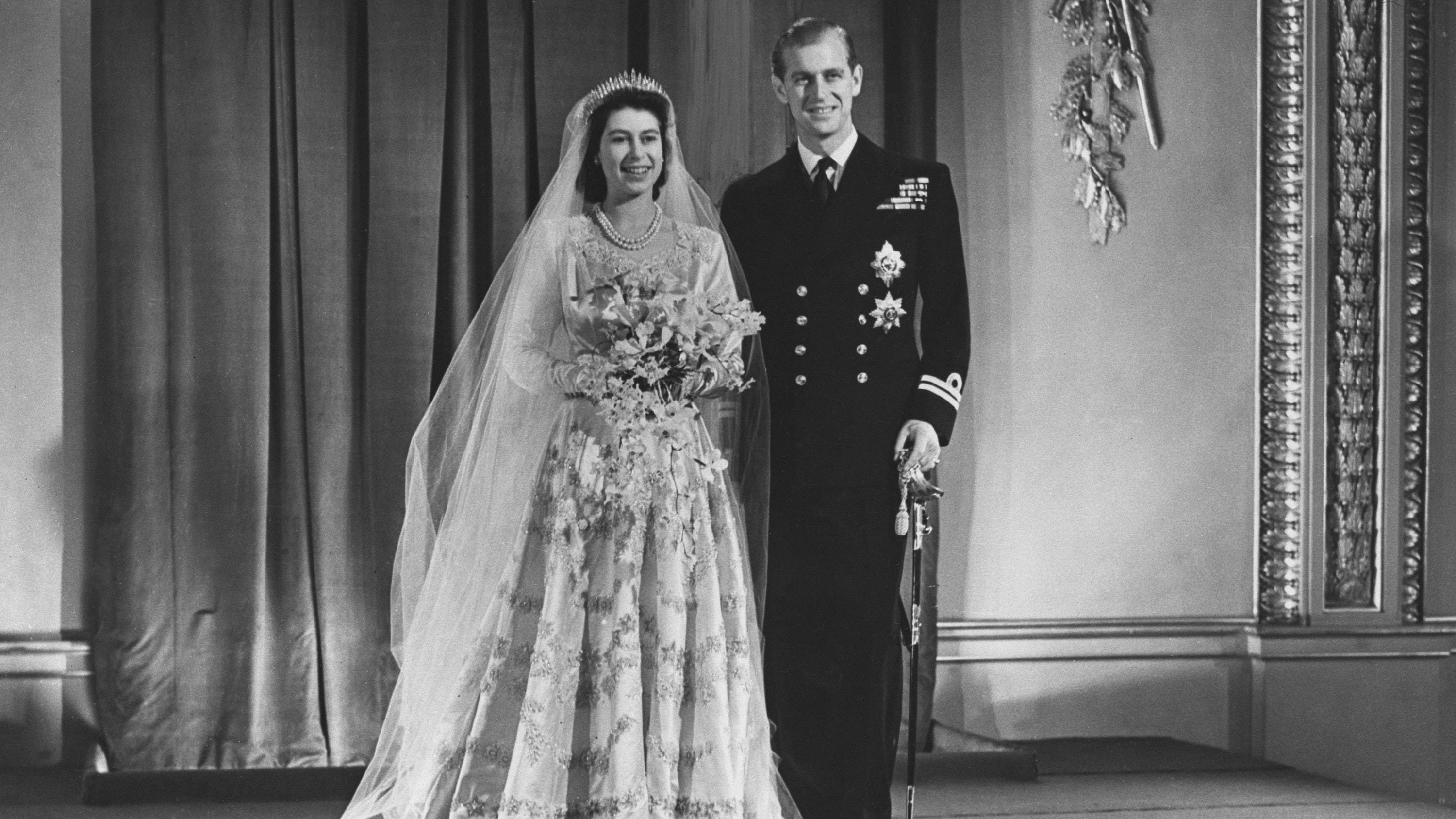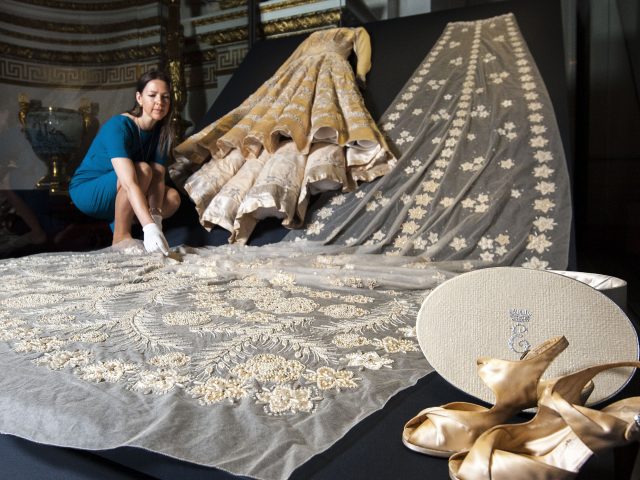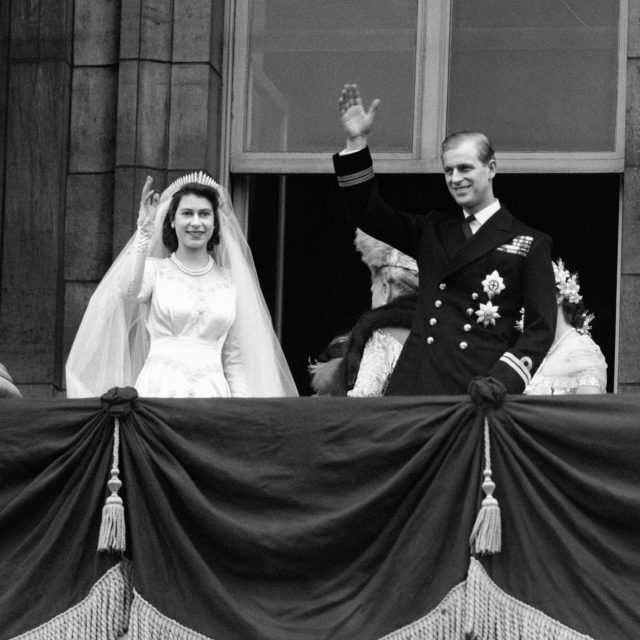
THE Queen’s wedding dress has been hailed as “fresh and timeless” 70 years on from when she walked up the aisle on November 20 1947.
Bridal expert Jenny Swire said the Sir Norman Hartnell gown with its fitted bodice and intricate embroidery was perfect for the young Princess Elizabeth.
Swire, contributing fashion director at Wedding Venues Magazine, told the Press Association: “She looked absolutely beautiful on her wedding day.
“I can’t imagine that it could have been improved upon. I think it was perfect in every way. She looked incredibly regal. She wasn’t Queen yet but she looked like a Queen.”
She added: “She was so young and somehow the dress still looked good on such a young bride. It didn’t age her in any way. It wasn’t too fuddy-duddy or old fashioned.
“Seventy years on, it still looks fresh and timeless and beautiful. I loved her dress.”
The Duchesse ivory silk-satin creation took royal couturier Sir Norman and his team three months to finish.
With a heart-shaped neckline with scalloped edge, the gown was decorated with 10,000 seed pearls, glittering crystals and featured an intricate 13ft star-patterned train.
Embroidered with roses, star-shaped flowers and wheat in pearl, crystal and appliques of transparent tulle, its floral design was seen as a symbol of growth and regeneration after the hardships of the Second World War.
Swire said: “The embroidery was unbelievable – everything stitched by hand – pure couture. It was just incredible. It was stunning.”
On the day of the wedding, the seamstresses who worked tirelessly on the gown were given a prime spot outside Buckingham Palace as a reward.
Joining the crowds for the first glimpse of the bride in her dress, they watched the Princess make her way from the Palace in a horse-drawn carriage to Westminster Abbey
To mark the Queen’s diamond wedding anniversary in 2007, the dress went on show for the summer opening of Buckingham Palace. For what was believed to be the first time in years, the monarch set eyes on the gown she wore as a 21-year-old to marry Lieutenant Philip Mountbatten at a special preview of the exhibition.
Sir Hugh Roberts, director of the Royal Collection at the time, said after showing the Queen the displays: “This one is very personal to her and must bring back many extraordinary memories of that day,.”
He added: “I think, as with everybody really seeing the dress again, she will have marvelled at the marvellous quality of the embroidery, and the marvellous way the dress was so particularly well suited to that great occasion.”
Sir Norman Hartnell once recalled how rumours circulated that the silkworms were of Italian or Japanese origin and therefore provided by “enemy” territories.
But they were provided by the Scottish firm of Winterthur and came from China.
A full court train of silk tulle was attached at the shoulders of the dress and the pattern of the embroidery was inspired by Botticelli’s garlanded figure of Primavera.
Hartnell described the process of tracing the design.
“I marked in circles the rich white roses of York to be carried out in padded satin, and centred by raised strands of pearls threaded on silver wire and raised up in relief,” he said.
“All these motifs had to be assembled in a design proportioned like a florist’s bouquet.
“Wherever there was space or weakness of design I drew more wheat, more leaves, more blossom of orange, syringa or jasmine.”
The bride’s high-heeled, sandal-style shoes were made by Edward Rayne in the same ivory duchesse satin as her dress and trimmed with silver buckles studded with seed pearls.
The fittings took place at Buckingham Palace.
Sir Norman and his team worked from his Mayfair base behind whitewashed windows covered in white muslin to keep the details a secret.
The Queen, like all British brides in the post-war days, was given 200 extra clothing coupons from the Government towards her wedding trousseau.
Women across the UK, keen to ensure Princess Elizabeth would have the dress of her dreams, sent their own coupons to the young royal to help out.
But it was illegal to give coupons away and the gifts had to be returned.

Enjoy the convenience of having The Sunday Post delivered as a digital ePaper straight to your smartphone, tablet or computer.
Subscribe for only £5.49 a month and enjoy all the benefits of the printed paper as a digital replica.
Subscribe


